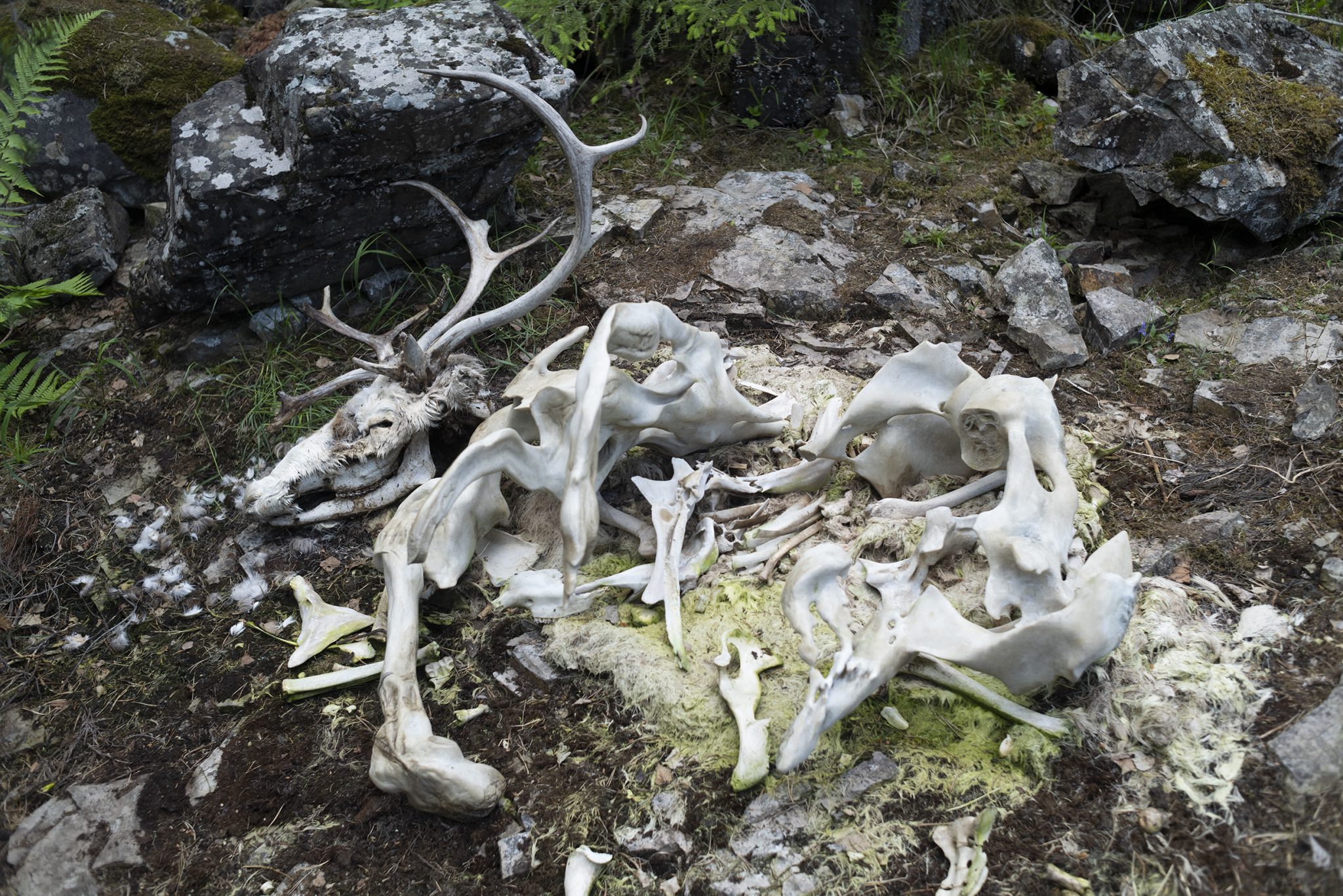“It is a chimera. A blur,” the artist Pierre Huyghe says of his new installation at Kistefos sculpture park in Norway
One wet morning in June, I arrive at the Kistefos Museet, a contemporary art museum and park set in the woods of Jevnaker, Norway – about an hour’s drive out of Oslo. Kistefos, founded in 1996 by the businessman and collector Christen Sveaas, occupies the grounds of a nineteenth-century wood-pulp mill once owned by his grandfather, its 43 acres now teeming with towering sculptures. On an isolated plot of the park a new artwork is mid-installation. Its many protagonists include the gleaming white skeleton of a reindeer, an upturned boat, and the decaying corpse of a fox (a mushroom-like translucent substance blooming from its face). There is a soundtrack too: an uncanny tapestry of noise taken from the landscape – birdsong or trains – that is generative, the project’s curator Anne Stenne tells me. “You understand it’s a bird, but it doesn’t sound like a real bird,” she says. It’s an “echo relay mutation of sound”.
The patch of land – each branch, stone, pool – has been scanned using LiDAR technology (a form of 3D laser-mapping) into a virtual simulation. Constantly updated by sensors dotted around the island, which feed in data on things like local weather conditions, or the water’s chemical composition, this simulation has begun to take on a life of its own. You can even ‘see’ something of that simulation displayed on a gigantic LED screen, nestled in a clearing; the monitor projects the scanned outlines of trees, viewed from the perspective of some feral, stalking creature. But aside from this glimpse, the virtual island remains hidden from us.
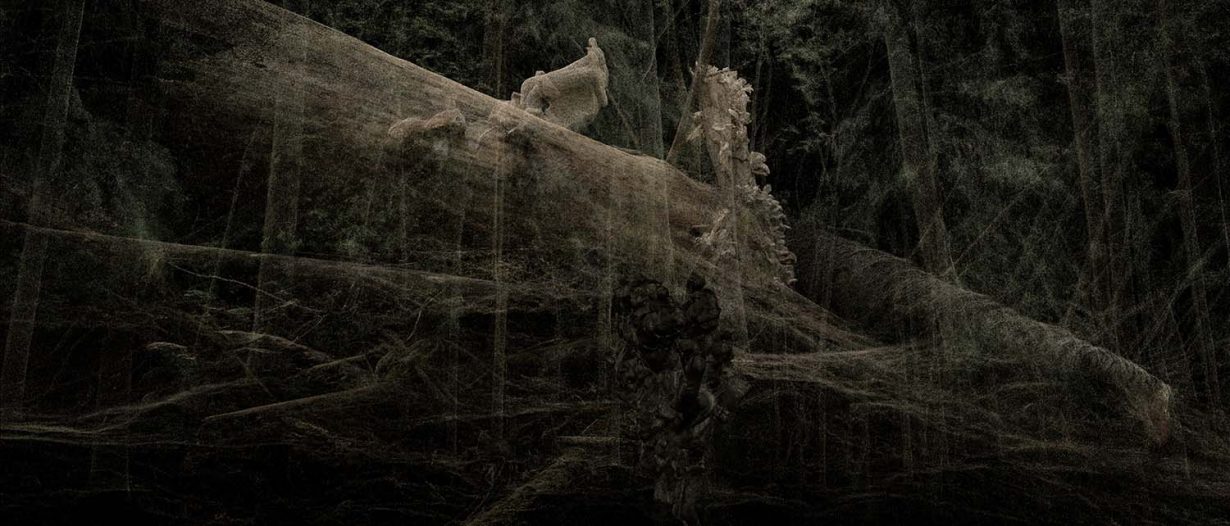
An important narrative moment follows. As the simulation evolves, we are told that its digital mutations have begun to leak back into real life (the artist interpreting them in material form). As I walk around, I pass these glitches (or the artist’s assistants hurriedly applying the finishing touches to them): foam tendrils emerging from water, metal sprouting from metal, the déjà vu of a stone sitting next to its exact replica, resin globules puffed out of trees. A neon pink beehive will soon be making its appearance, someone says. Can the simulation keep up with the contingency and unscriptedness of how events unfold IRL? Or will the algorithm outpace reality?
Pierre Huyghe, the artist behind Variants (2022), has been producing variations on this theme for decades. His early film The Third Memory (2000) reenacted the Brooklyn bank holdup (that had served as the basis for Sidney Lumet’s Dog Day Afternoon, 1975) and starred the real-life bank robber John Wojtowicz. As Wojtowicz replays the events of that day, it soon becomes apparent that the fictionalised version of the heist has influenced even his memory of it, overwriting his own lived experience. There’s also Huyghe’s (yet unrealised) quest with a scientist to breed real-life versions of imagined butterflies that Nabokov once drew. Huyghe is concerned with the porousness of reality, or how different realities might refashion one another.

Lately, Huyghe has been considering this leakiness in the form of immersive, unstable vivariums: strange ecosystems in which animals (a peacock, a pink-legged Ibizan hound, a hermit crab with a Brancusi head for a home), poisonous plants, cancer cells, artificial intelligence (and the artworld’s spectators) collide. Landscapes, like Variants, which bleed into other landscapes.
The peninsula on Kistefos, Huyghe tells me, is a place of possibility, “a place where I can play”. Space and freedom to roam are important ingredients. “I am not making compact objects. It is very much an environment or a milieu,” he says. The land’s tendency to succumb to flooding – so frequently that it often becomes an inaccessible islet – is also an essential part of Variants’ narrative structure. “There is not only space, but also a tempo. A variation,” he explains. “I liked that there was an unpredictable moment in which you will be cut off [but] the work will keep modifying.”
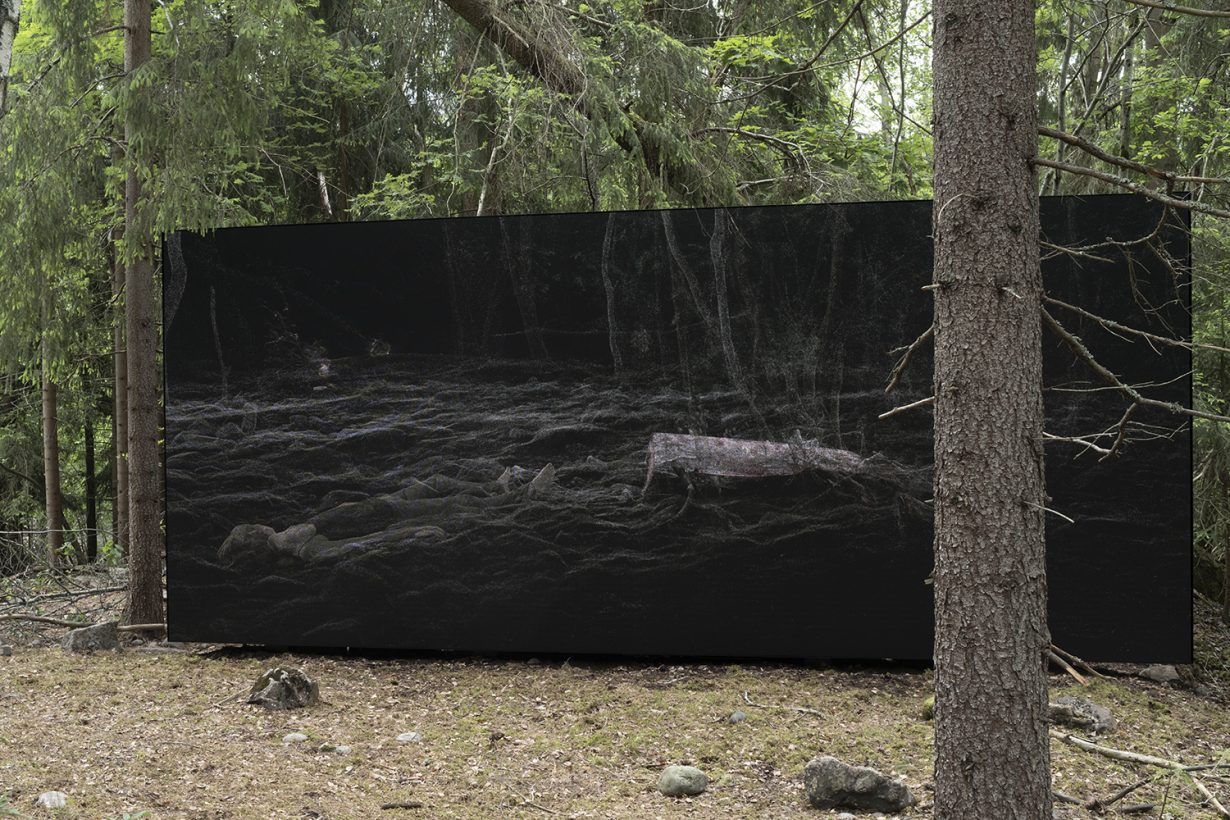
It is also, Huyghe says, a question of attention. Someone visiting Variants for the first time might easily walk across the island without any idea that the artwork is there. By way of explanation, Huyghe drifts into an anecdote about how the lion always ate the zebra in the nature documentaries he remembers watching as a child. “I’m trying not to bring that dramatic moment where the work needs to express itself in such a loud way,” he says. “It does not always need the gaze to exist.”
You could say that Variants’ dematerialised quality inverts the sculptural pomp of the rest of the park. If sculpture parks are peculiar institutions at the best of times, relegating art to the status of suburban garden gnomes – ornamental, passive, inconsequential – then Kistefos’s greatest hits are no exception. One of Tony Cragg’s biomorphic columns here; Yayoi Kusama’s spotted tentacles over there. Walking back from Huyghe’s installation, I bask momentarily in the megalomania of Marc Quinn’s All of Nature Flows Through Us (2011), a huge doughnut-like structure that gushes with the waters of the Randselva river (the bronze ring through which the flow happens is modelled on Kistefos owner Christen Sveaas’s iris).
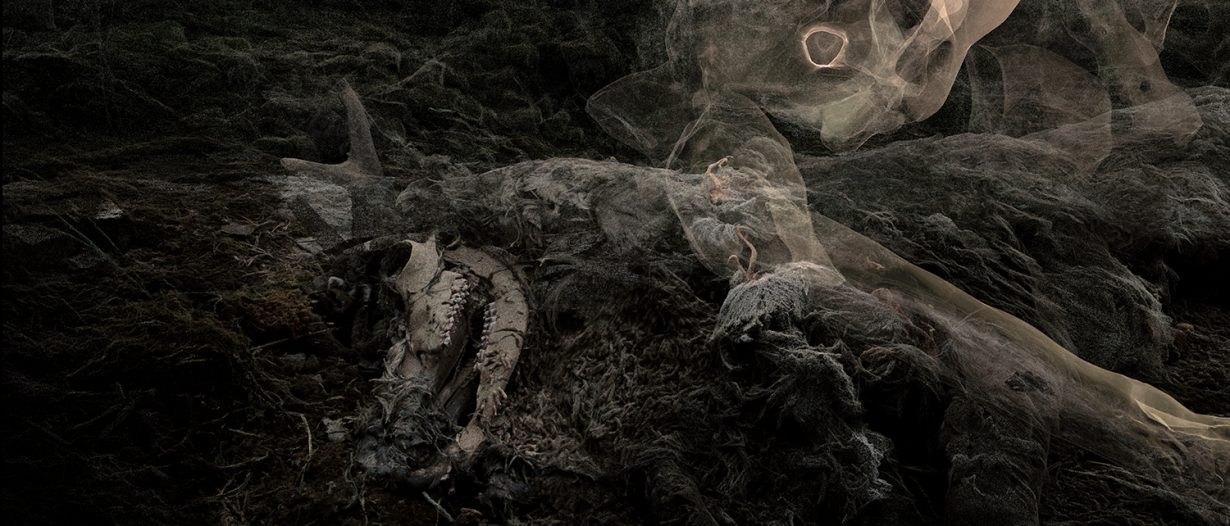
Variants is paradigmatic of the proliferation of AI-generated art (from Ian Cheng’s virtual serpents to the abstract geometries produced by the robot Ai-Da, or the absurdist situations of DALL-E). Our enchantment with what machines see, imagine, or can dream up for us shows no sign of wearing off. And there is nothing strange about this; after all, the way we alter our modes of storytelling has always been directed by societal change.
But what is distinctive about this art is that much of its content lies outside the field of conventional perception. To misappropriate a term used by the media scholar Alexander Galloway in the context of gaming, there is an ‘allegorithm’ to these works, or rather an allegorical level on which their algorithms function. The visceral, sensual experience of an artwork is now bound up in often hazy attempts to assess its underlying connection to an algorithm; the latter’s workings are often shielded from us. The opacity is part of the allure (as it is while playing a videogame, or posting on social media, for instance).
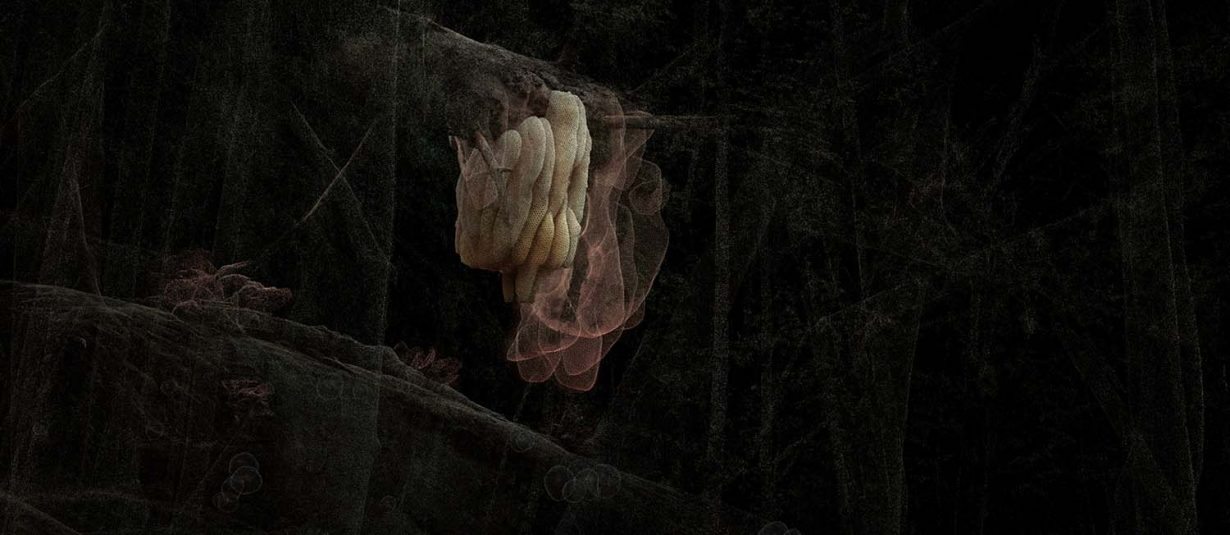
Variants is at pains to stage this relationship. In the sculpture park, we are left guessing as to what the AI’s veiled logic is and can only scrutinise its mutated consequences within the real world. “I wanted to have different intelligences at play,” Huyghe tells me. “You do not separate them between nature and simulation. It is neither one nor the other. It is not a binary. It is a chimera. A blur, an indifferentiation.”
In Variants’ simulation, and in its IRL manifestation, forms grow and wither; some overpower others. It is poetic and evocative. But what perhaps is missing is a sense of tension between the virtual and the physical (and yes, I know that virtual modes of experience can possess ‘realness’). We hardly need reminding that we, and the world around us, are continually being smoothed down to financialized data-points, to be assessed, qualified, evaluated and ultimately fed into algorithms which are then thrust back to us, reshaping our desires, decisions, and consciousness. If Variants (as with countless artworks in this allegorithmic vein) is a performance of the very technologies that entrance us, then it offers no way out of – nor glimpse beyond – this seemingly endless feedback loop. Why, I am left wondering, do we need an artwork that merely reanimates this terrifying knot between the virtual and the real, when what we so desperately need is art that disturbs it, that troubles it, and that unties it.
